Adaptive Architecture
Prototyping Adaptive Architecture
Balancing Flexibility of Folding Patterns and Adaptability of Micro-Kinetic
Movements
Binh Vinh Duc Nguyen1, Thanonchai Watlom2, Chengzhi Peng3, Tsung-Hsien Wang4
1,2,3,4School of Architecture, University of Sheffield, United Kingdom
[email protected] 2,3,4{twatlom1|c.peng|tsung-hsien.wang}@sheffield. ac.uk

The design process of dynamic architecture has been an emerging topic in recent studies, in which researchers try to find an effective method of generating and controlling adaptive components.
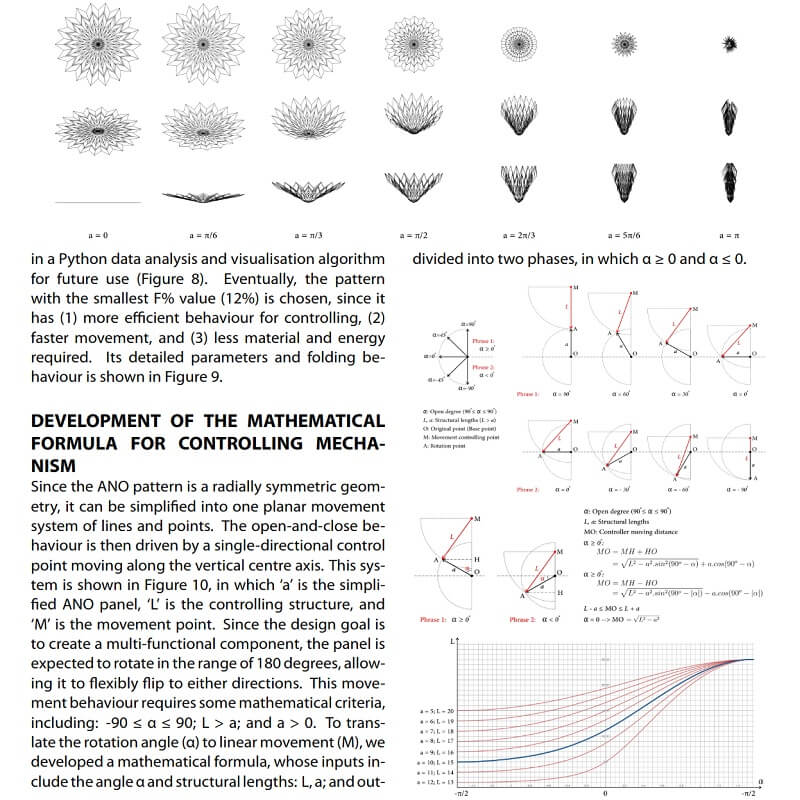 In this paper by Binh Vinh Duc Nguyen, Thanonchai Watlom, Chengzhi Peng and Tsung-Hsien Wang, authors present a digital-physical modelling process that seeks to explore tectonic fusion of origami folding patterns and micro-kinetic movements.
In this paper by Binh Vinh Duc Nguyen, Thanonchai Watlom, Chengzhi Peng and Tsung-Hsien Wang, authors present a digital-physical modelling process that seeks to explore tectonic fusion of origami folding patterns and micro-kinetic movements.
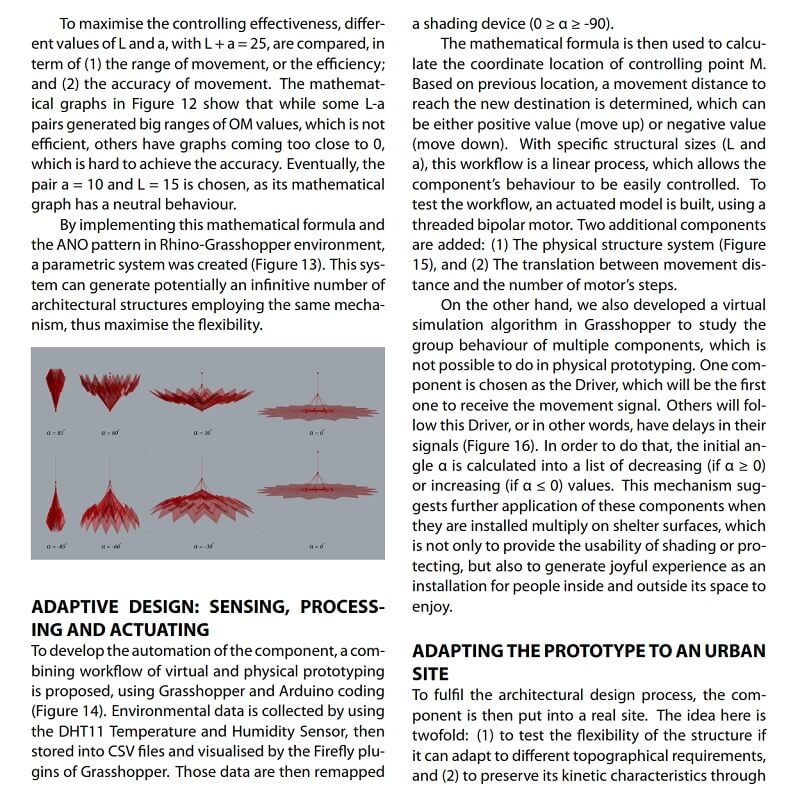 A flexible modular prototype system is developed and evaluated through combining origami-based fabrication simulation and mathematical characterisation mimicking the pinecone’s nastic movements. The modular design system is then applied to an urban site as a test case study.
A flexible modular prototype system is developed and evaluated through combining origami-based fabrication simulation and mathematical characterisation mimicking the pinecone’s nastic movements. The modular design system is then applied to an urban site as a test case study.
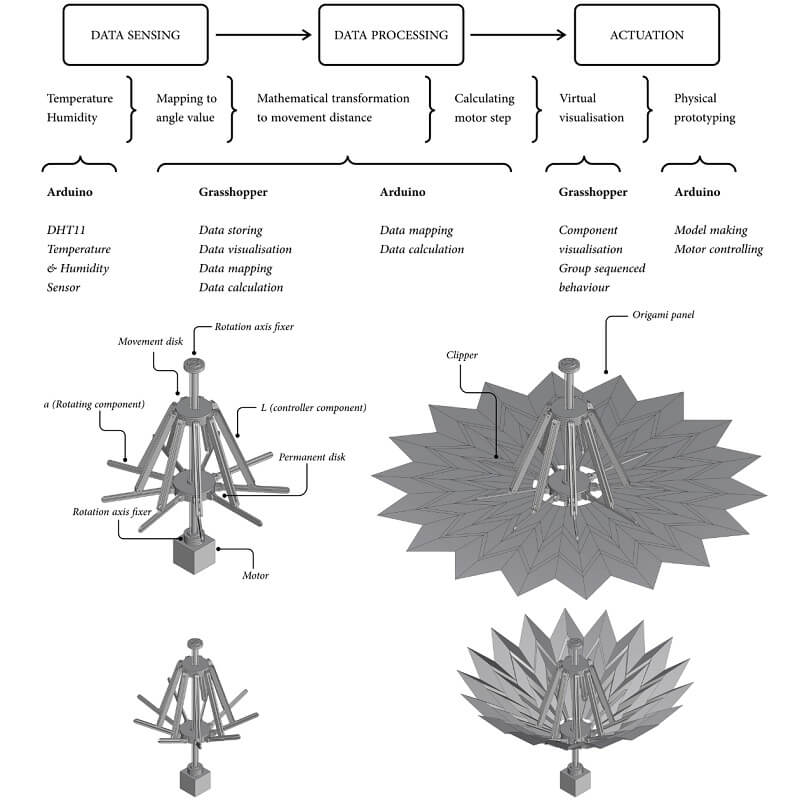 The results show how the pinecone-like nastic movements may be translated into design and fabrication of an adaptive architecture. Authors discuss the lessons learned from the digital-physical prototyping process finding the balance between geometric flexibility and micro-kinetic adaptability.
The results show how the pinecone-like nastic movements may be translated into design and fabrication of an adaptive architecture. Authors discuss the lessons learned from the digital-physical prototyping process finding the balance between geometric flexibility and micro-kinetic adaptability.
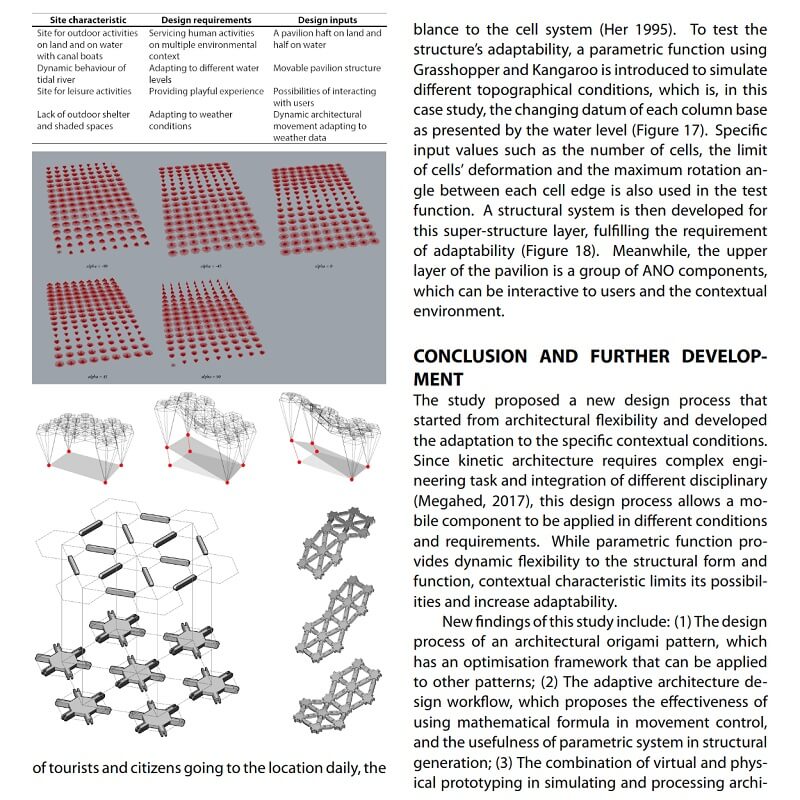
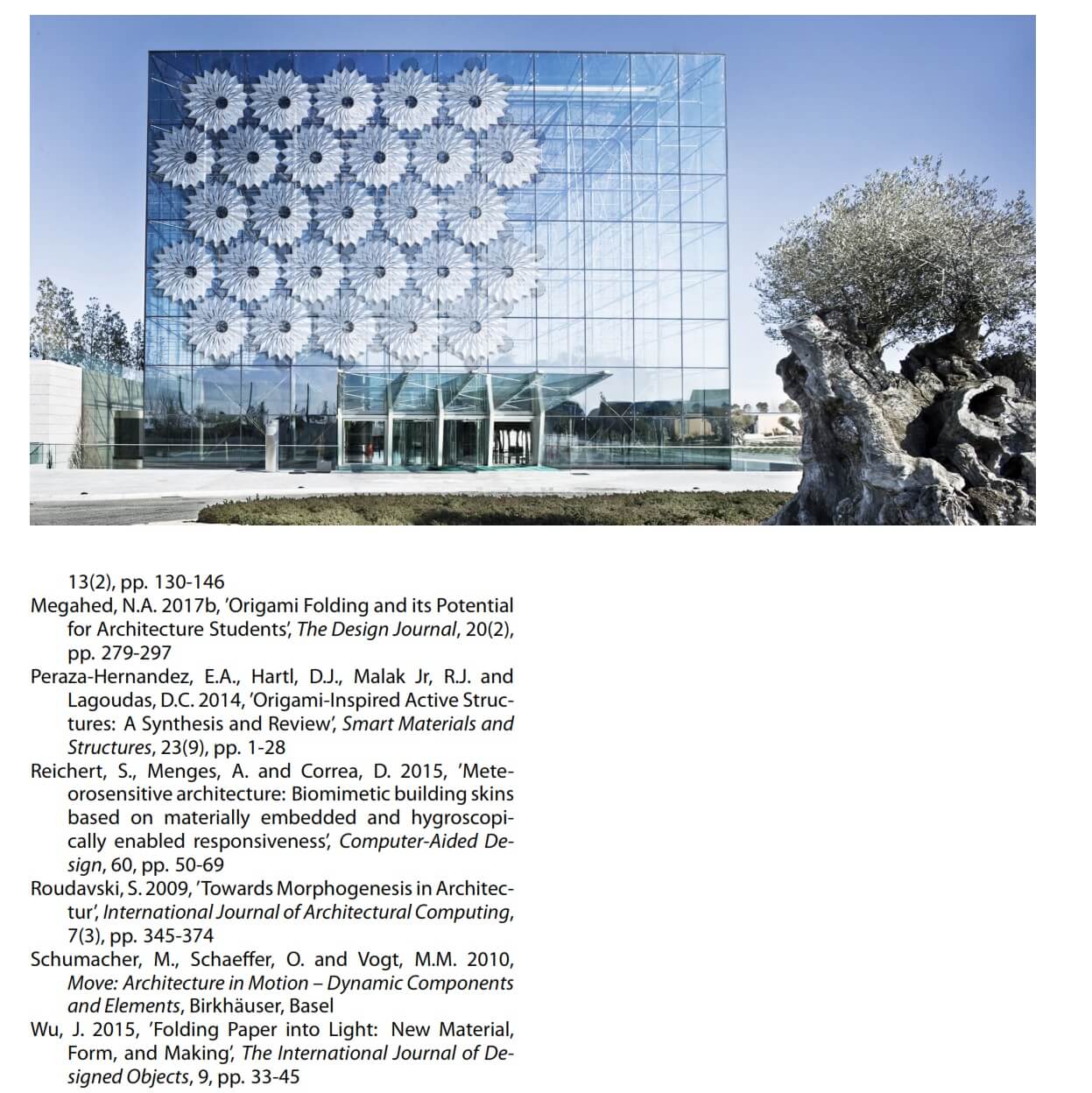




























Comments